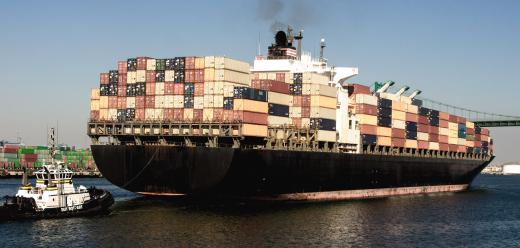There are several types of bills of lading at use among shippers and merchants around the world, though they can generally be broken into a few general categories. The simplest is usually what’s known as a direct or straight bill, though this is usually only suited for standard interactions between shippers and sellers. More complicated situations require more nuanced types, primarily order bills, which are used when goods are shipped before they’ve actually been paid for; combined transport bills, which cover both shipment and delivery; and through bills, which provide for multiple carriers and a shifting responsibility. It’s also common for a number of clauses to be added to bills to personalize them for the specifics of a given situation.
Understanding the Bills Generally

Bills of lading are official documents that serve as an evidence of a contract between a shipper and a shipping company or ship master, in which the latter has agreed to carry the goods on behalf of the shipper to a stated destination. They are important legal instruments that are often used to assign responsibility and prove liability in the event that shipped goods don’t arrive, or don’t arrive as promised.

The first bills of lading almost exclusively applied to sea merchants, and were an important facet of maritime law for centuries. Most of the direct or simple types recall this more simplistic past, wherein there’s one shipper and one recipient. Many still concern ocean liners, but virtually any means of shipping can make use of this bill today. Modern trade is often more complex than in ages past, though, and as such different types of bills of lading have adapted. Though the specific clauses and provisions vary, sometimes a lot, the core concept — protecting buyers, sellers, and the commercial transaction itself — generally remains consistent.
Direct or Straight Bills
Merchants frequently use a direct bill of lading when the goods are only moved from the originating port to the destination port. On a practical level, this means that the shipper will have to make his or her own arrangements regarding the delivery of the goods from the storage to the shipping company. When the goods arrive at the destination port, the consignee, or the person who has been named on the bill as the recipient of the goods, will need to make the arrangements to pick up the goods from the shipping company. Most times, this type of bill has a clause at the back granting the shipping company the authority to transfer the goods to another ship, truck, or vessel before its arrival at the stated destination.
Order Bills
Order bills are similar in scope but are usually used when the merchandise being shipped hasn’t yet been paid for. The sellers in these cases often assume liability for the value of the goods if damaged, and the orders and stipulations in the bills typically give recipients the right to refuse defective or incomplete loads. Provisions for how and when payment must be collected are typically included, as well.
Combined Transport Bills
The combined transport bill is normally issued in situations when the shipping company takes responsibility for picking up the goods from the shipper as well as delivering the goods to the consignee upon arrival at the destination. This type of bill of lading is called a “combine” bill because it usually involves more than one form of transportation. For instance, the shipping company may pick up the goods from the office, warehouse, storage or the shipper's home by truck. It would then be loaded onto a ship or plane, unloaded upon arrival at the destination, and delivered to the consignee by truck, train, or other means of transport.
Providing for Multiple Carriers
A through bill of lading is similar to combination since both types involve other means of transport. The only difference is that, under a through bill, the other forms of transportation will not be provided by the shipping company. In this instance, the different stages of transportation will involve other carriers such as truck rentals, rail transport, and even air transport. Where this is the case, the shipping company may only accept liability for any damage to the goods only while the goods are directly in its possession. Liability for damages while the goods are in the possession of the other transporters may be limited to them.
